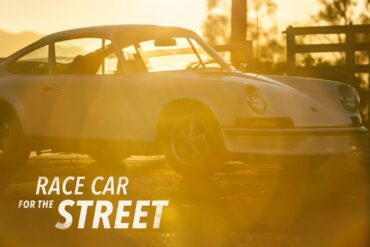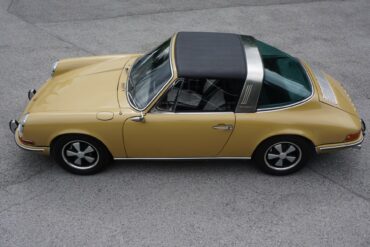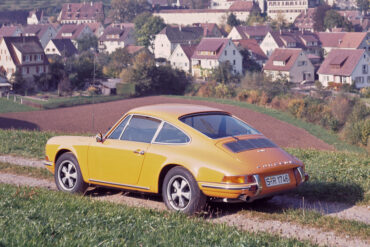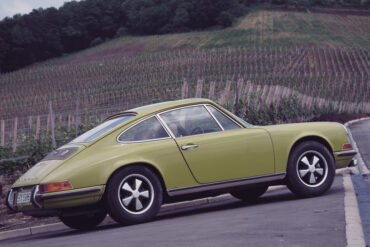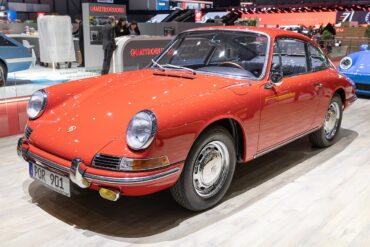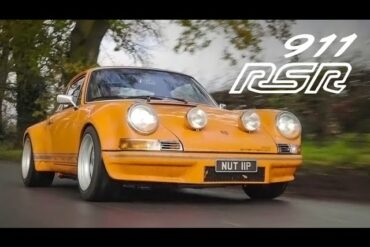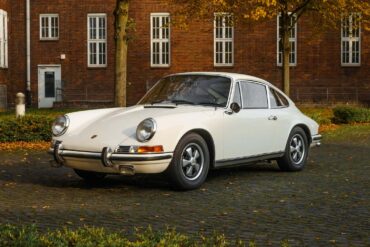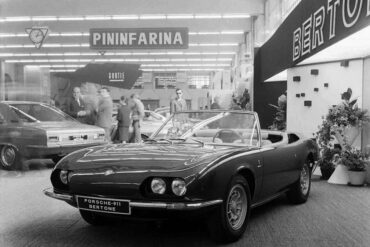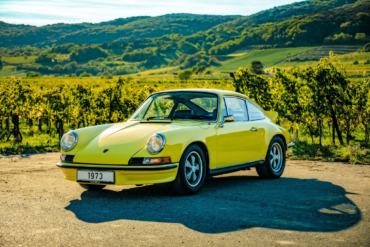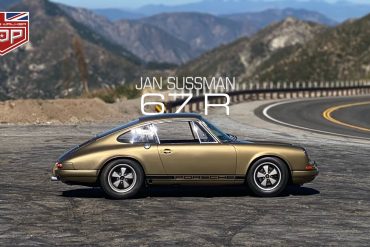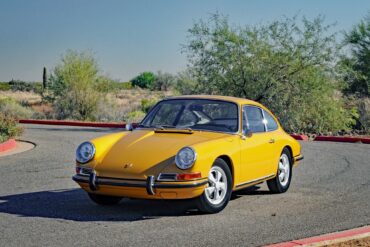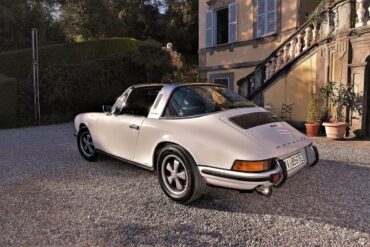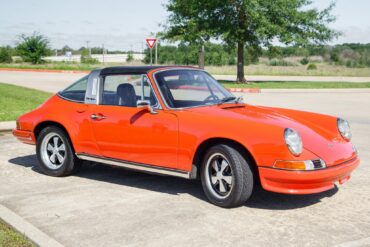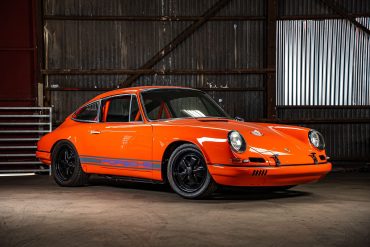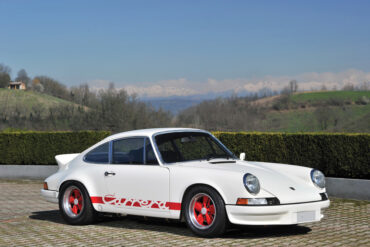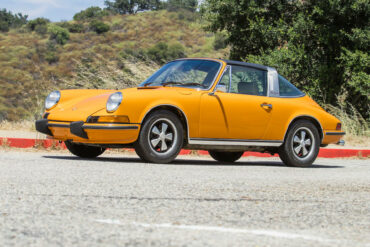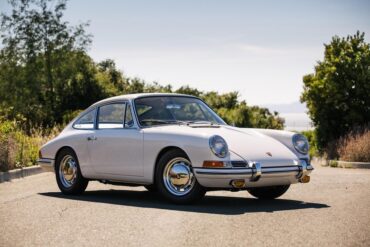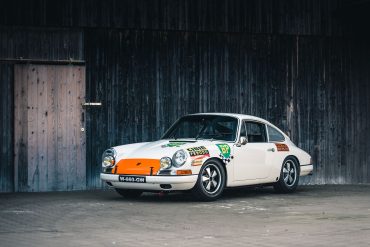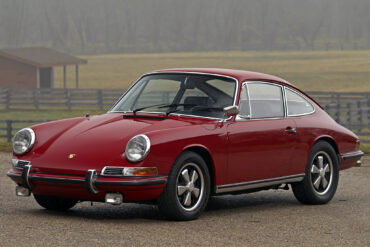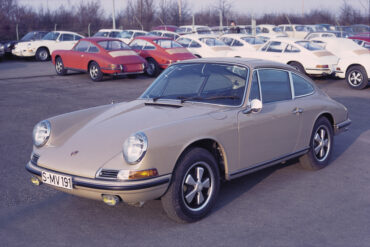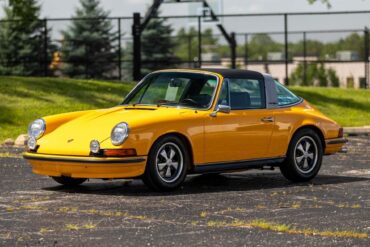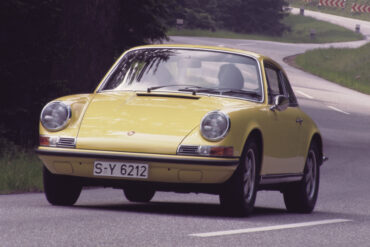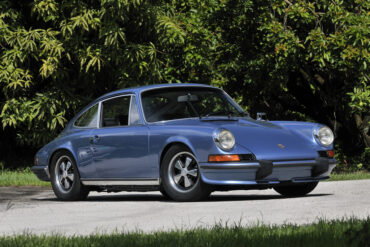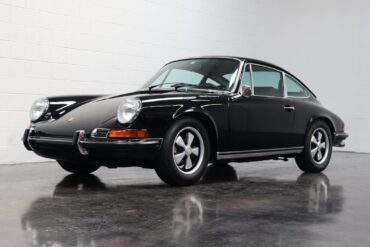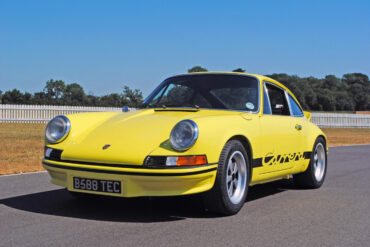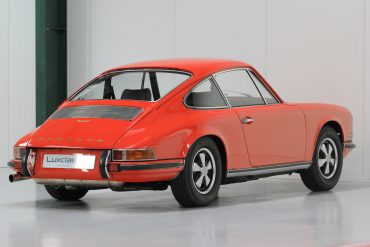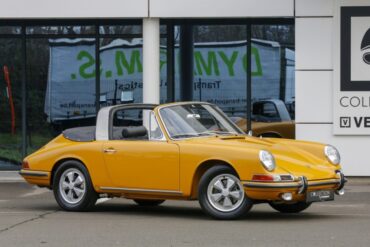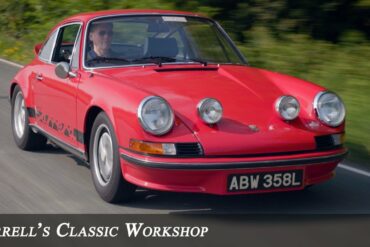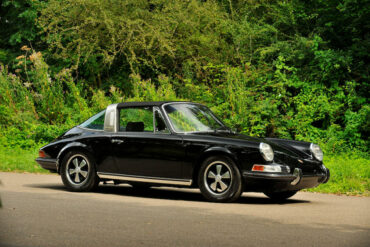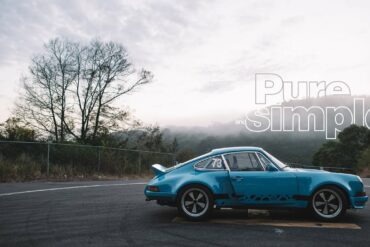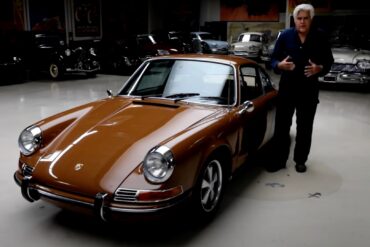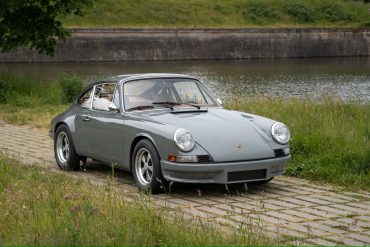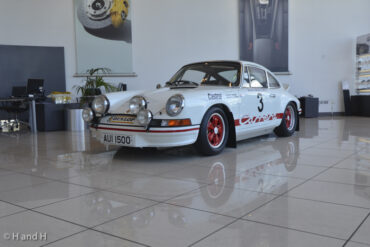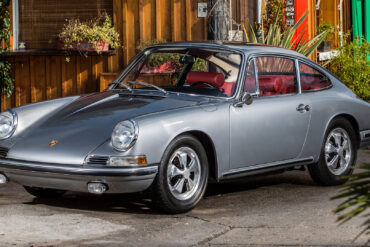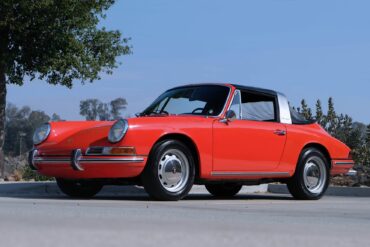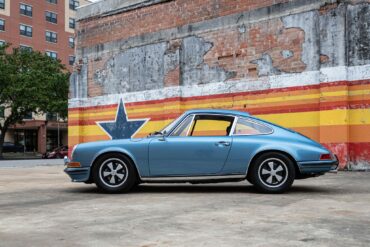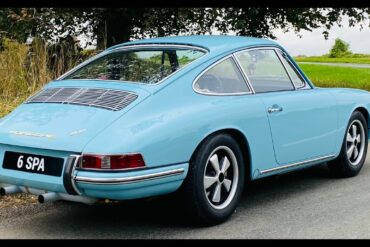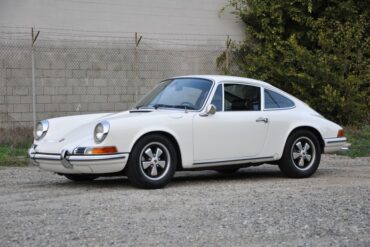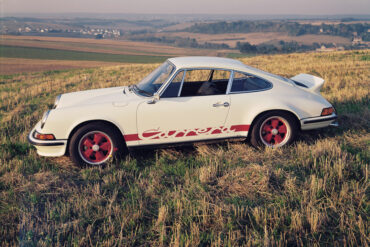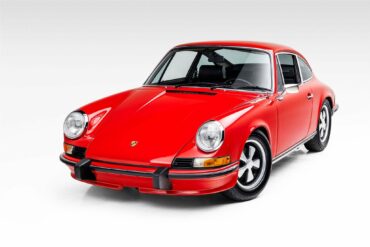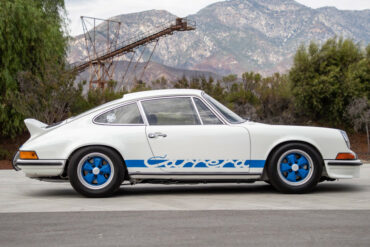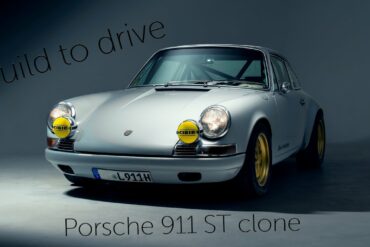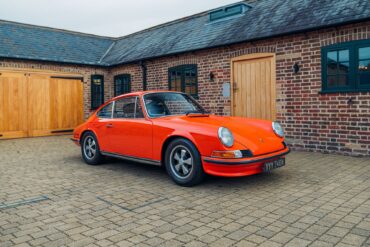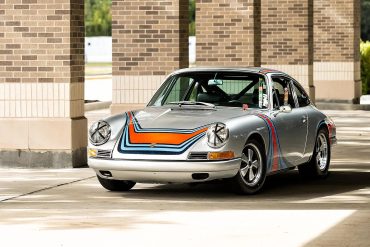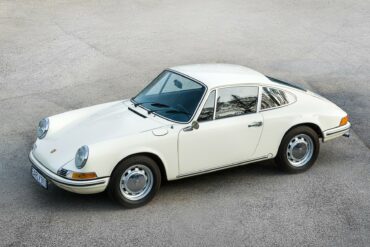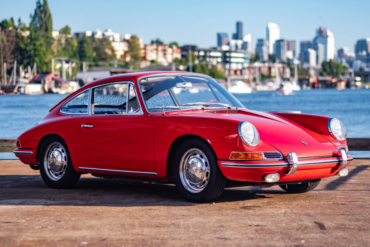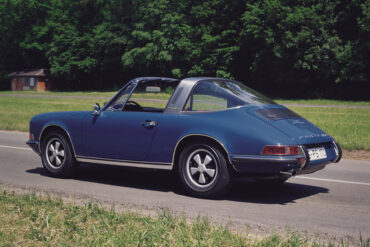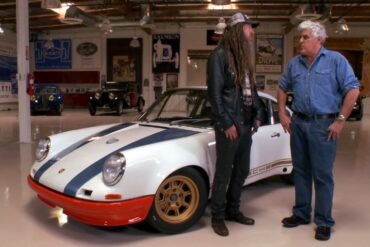The Ultimate 911 In the early 1970s, Porsche found itself in need of a street car that would allow the...
1969 Porsche 911 E Targa 2.0 (LWB) Technical Specifications Engine Type Flat 6 Induction Normally-aspirated Cooling Air/oil-cooled Valvetrain Single overhead...
The Porsche 911T continued as the entry level 911 for the 1970 and 1971 model years, sitting below the 2.2L 911 E and the 2.2 L 911 S. The 911 T featured all the upgrades that came with C-Series production updates including longer wheelbase and Fuchs alloy wheels. During its production years it was available as both a Coupe or Targa bodystyle. As with the E and S variants, Porsche would upgrade the 911T to a larger 2.2 liter engine.
The Porsche 911E continued as the midrange 911 for the 1970 and 1971 model years, fitting between the contemporaneous 2.2L 911T and the 2.2L 911S. It produced 155 bhp and featured all the upgrades that came with C-Series production including longer wheelbase, Fuchs alloy wheels. Both the E and S model 911 had an aluminium engine-lid and aluminium bumpers. The 911 E 2.2 was once again available as either a Coupe or Targa body. For model year 1972, the 2.2L 911E was replaced by the 2.4L 911E.
1963 – 1964 Porsche 901 Technical Specifications Built At Germany Body Stylist Ferdinand Engine Flat-6 Position Rear, Longitudinal Aspiration Natural...
Sublime Or Sacrilege? ‘If you want to build something, build it how you want it.’...
1970 – 1971 Porsche 911 E Coupe 2.2 (LWB) Technical Specifications Induction Normally-aspirated Cooling Air/oil-cooled Valvetrain Single overhead camshaft Injection...
Southern California Porsche dealer Johnny von Neumann knew what his customers wanted, and a Targa top Targa 911 wasn’t it. With Porsche’s approval, he hired designer Nuccio Bertone to create a one-off 1966 Porsche 911 Spyder, in hopes of launching low-volume production. Just one example was constructed. The engine incorporated a vertically-mounted cooling fan, a 9.1:1 compression ratio and two triple-choke 40PI Solex carburettors. Peak output was 130bhp at 6100rpm and 174lb-ft at 4200rpm. Transmission was via a Type 901 five-speed gearbox and single-plate clutch.
Revealed at the 1972 Paris Auto Show, the Carrera 2.7 RS was a special model used to homologate the 911...
Based on the 911S, the 911 R was produced by Porsche to compete in the FIA’s GT 2.0 category. To...
1967 – 1969 Porsche 911 S Coupe 2.0 (SWB & LWB) Pictures & Gallery...
1972 – 1973 Porsche 911 S Targa 2.4 (LWB) Technical Specifications Induction Normally-aspirated Cooling Air/oil-cooled Valvetrain Single overhead camshaft Injection...
1972 – 1973 Porsche 911 T 2.4 Targa (LWB) Pictures & Gallery...
This 1968 Porsche 911L Coupe, refinished in its original Tangerine color by SOS Customz in Oceanside, CA, received numerous modifications....
Of all the 1580 Carrera RS 2.7s, only 200 were made were ordered with this lightweight ‘Sports’ trim which made the car more responsive and purposeful. In many ways these few cars were the ultimate road-going Porsche of the 1970s. Known as the Sports, Lightweight or even the M471 option code, these cars had improved the power-to-weight ratio. Reports of 75kg were stripped from the standard model by fitting lightweight body panels and lightweight glass.
1972 – 1973 Porsche 911 E Targa 2.4 (LWB) Technical Specifications Induction Normally-aspirated Cooling Air/oil-cooled Valvetrain Single overhead camshaft Injection...
The first generation of the Porsche 911 begins in late 1964 and goes through 1968. The "base" model was an instant hit. During this period, Porsche would make continuous improvements and tweaks to the body, to its short wheelbase (SWB) chassis, and to its 2.0 liter flat six engine. Model year 1968 would be the last for the early 911, a transition that would begin with the introduction of the higher output 911S in 1967, followed by the 911L and a new entry level 911T in 1968, and finally, the 911E in 1969. The base 911 was available as both a Coupe and Targa (starting in '67).
Thanks to the launch of its modern 911 R, the original Porsche 911R has been thrust firmly back into the limelight over the...
The 911 S was introduced to increase the performance potential of the very successful 911. It had a more powerful...
In 1967 the A-Series Porsche production line was divided into the entry-level 911T, the standard 911 L for Lux and the sporting 911S. The 911L was effectively the 911 2.0 from previous years with only very minor updates such as new door handles, a brushed aluminum dashboard, a black steering wheel and other very minor details. In Europe, where it was considered the midrange model it featured engine Type 901/06 (Type 901/07 with Sportomatic) rated at 130 hp. In North America, the 911L was the highest level offering.
Porsche 911 (F-Body) Production & Chassis Numbers (1964 – 1969) ...
The Porsche 911E continued as the midrange 911 model for 1972 and 1973, fitting between the contemporaneous 2.4L 911T and the 2.4L 911S. As with the T and S variants, Porsche would upgrade the 911E to a new, larger 2,341 cc (2.3 L) engine, commonly known as the "2.4 L" engines. The 911E version, designated 911/52 was rated at 165 hp (it was designated 911/62 with Sportomatic). With the power and torque increase, the 2.4-liter cars also got the newer and stronger transmission.
The final early 911S befitted from Porsche's 2.4-liter engine the the long-wheel-base body. As such it is one of the final classic 911s before the 2.7 came out in 1973. Visually, the 2.4 range received a new chin on the front valence that was standard on the 911S and optional for the rest of the range. The S model had slight larger 6Jx15 Fuchs alloy wheels over the other models. The final early 911S benefitted from Porsche's 2.4-liter engine the the long-wheel-base body
Porsche Option Codes – Porsche 911 (1971 Model Year) Looking to decode your 1971 Porsche 911 option codes? Want to...
1973 Porsche 911 Carrera RS 2.7 Touring Pictures & Gallery ...
Porsche 911 (F-Series) Transmission Codes The transmission number code is found on the transmission data plate. Transmission Codes 911 2.0...
1967 – 1968 Porsche 911 S Targa 2.0 (SWB) Technical Specifications Engine Type Flat 6 Induction Normally-aspirated Cooling Air/oil-cooled Valvetrain...
The 911 Porsche feared no-one would buy! In this episode we bring you a rather special car, one of the...
1970 – 1971 Porsche 911 E Targa 2.2 (LWB) Technical Specifications Induction Normally-aspirated Cooling Air/oil-cooled Valvetrain Single overhead camshaft Injection...
A Unique Tribute From its humble beginnings, this 1970 911 enjoyed a varied life, most notably as a rather tasty...
On The Road You’ve followed this Porsche 911 T in the Restoration Blogs, now see and hear this modified boxer...
This 1971 Porsche 911 T Lightweight ‘Outlaw’ is a stunning classic sports car that has been tastefully ‘resto-modded’ with various...
Porsche 911 Carrera RS Sport Lightweight ‘AUI 1500’ as it is today The Porsche 911 Carrera RS 2.7 broke cover...
Porsche 911 (Classic) Technical Specifications & Model Comparison (European Variants) Comparison: European specs 911 2.2 Comparison: European specs 911 2.4...
1968 – 1969 Porsche 911 T Targa 2.0 (SWB & LWB) Technical Specifications Engine Type Flat 6 Induction Normally-aspirated Cooling...
1972 – 1973 Porsche 911 E 2.4 Coupe (LWB) Pictures & Gallery ...
1965 911 SWB by Sports Purpose. Is this £350,000 Porsche the purest driving 911 of them all? This ’65 Porsche...
Porsche 911 & 912 Spare Parts Catalogs (1965 – 1973 Model Year) These official Porsche PET Diagrams and codes for...
Revealed at the 1972 Paris Auto Show, the Carrera 2.7 RS was a special model used to homologate the 911 in Group 4 racing. Developed from the 911S, the 2.7 was more potent in almost every area. Compared to the standard Carrera, the 2.7 RS featured a larger engine, wider flares to accommodate the Fuchs alloy wheels, stiffened suspension, larger brakes and a ducktail rear spoiler. The Touring outsold the Lightweight, with a total of 1380 units built (the Lightweight had only 200 units).
European Collectibles is proud to present a 1973 Porsche 911E Coupe that is one of the 1,366 911E Coupes produced...
Porsche Option Codes – Porsche 911 (1973 Model Year) Looking to decode your 1973 Porsche 911 option codes? Want to...
Clean & Fast 911 ST Clone Karsten has build his Porsche the way he wanted it. Clean an fast, like...
1972 – 1973 Porsche 911 E Coupe 2.4 (LWB) Technical Specifications Induction Normally-aspirated Cooling Air/oil-cooled Valvetrain Single overhead camshaft Injection...
Introduced in 1966 to enhance the performance capabilities of the already successful 911, the 911 S boasted a more powerful...
1968 – 1969 Porsche 911 T Coupe 2.0 (SWB & LWB) Technical Specifications Engine Type Flat 6 Induction Normally-aspirated Cooling...
1965 – 1968 Porsche 911 Technical Specifications Production Years 1964 – 1968 Built At Germany Body Stylist Ferdinand Price $...
1968 – 1969 Porsche 911 T Targa 2.0 (SWB & LWB) Pictures & Gallery...
No More Content


